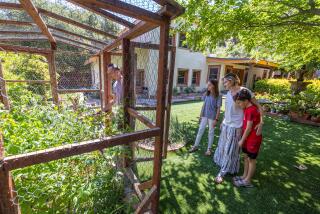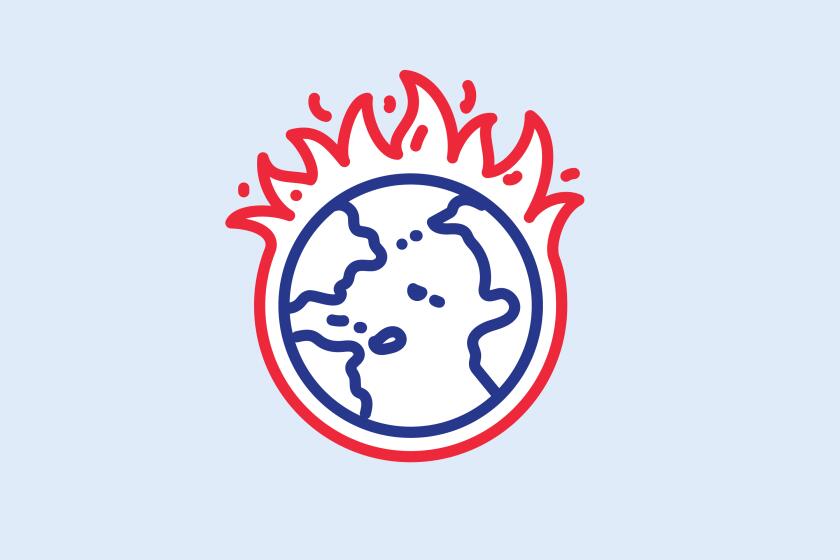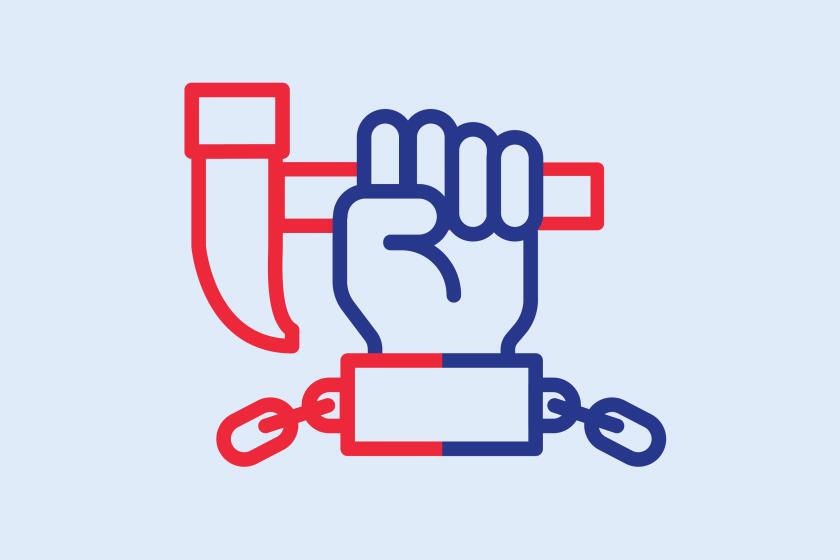A Coming of Age for S.F. Chinese
These days, Mayor Willie Brown is nearly as common a sight in this city’s bustling Chinatown as tourists and chop suey.
Campaigning hard for reelection in November, Brown is suddenly popping up at least three times a week at weddings, luncheons and any other gathering likely to draw a crowd in the hub of the city’s burgeoning Chinese community. The mayor now has a full-time staffer to handle relations with the city’s seven daily Chinese-language newspapers and three TV stations.
For years, put off by language barriers and the community’s low voter registration rate, San Francisco candidates largely ignored the Chinese. But with Asians now 35% of the city’s population and Chinese accounting for more than 60% of those Asians, Brown and his rivals are lavishing time, money and effort on them.
“Now you need a political strategy to win votes in the Chinese community,” says political consultant John Whitehurst. “Before, it would be a walk down Grant Street to pay tribute. Now, you need a multifaceted campaign--in Cantonese, Mandarin and English.”
All the attention has started a buzz here about the political coming of age of the nation’s oldest Chinese community, the city’s largest and fastest-growing ethnic group.
Even as Latino immigration is reshaping the rest of California, it is Asian immigration--and Chinese immigration in particular--that is remaking San Francisco. Asians are expected to outnumber whites here by 2017, and the Chinese are by far the most influential members of the Asian community, their roots stretching back to the Gold Rush.
San Francisco’s Chinese community is a dynamic, diverse and sometimes fractious mix. There are new immigrants from Hong Kong and the mainland; fifth-generation Chinese Americans, many of whom no longer speak the language of their ancestors; the elderly poor living in tiny Chinatown apartments; and Chinese yuppies buying million-dollar homes in suburban areas on the city’s western and southern edges.
The Chinese presence in San Francisco is ubiquitous--from the Civic Center, where a new Asian Art Museum showcasing the city’s world-class collection of Asian art is being built, to the schools, where Chinese children are the largest and fastest-growing group.
Chinese restaurants, produce markets, herbal shops and acupuncturists are spread across the city. Chinese are players in the city’s corporate boardrooms and in its philanthropic institutions.
But this acceptance into mainstream San Francisco life, Chinese community leaders say, is not reflected in the city’s political power structure.
“Right now, every time there is an appointment, it’s the first Chinese this, the first Chinese that,” says Rose Pak, with the Chinatown Chamber of Commerce. “I would like to see it as the norm.”
One of the community’s most savvy political power brokers, Pak’s realm is Chinatown. She calls it the “fragile soul” of the Chinese here.
Newcomers Find Crowded Conditions
The city’s third most visited tourist attraction, Chinatown is wedged between the financial district and trendy North Beach, and it remains the entry point for immigrants and a refuge for the elderly poor.
The real life of the neighborhood pulses behind and above the curio shops where tourists browse among porcelain figurines, plastic chopsticks and jade jewelry.
Behind the shops, the newcomers work in cramped factories, stitching silk pants and making fortune cookies. Most workers are women, and their children play at their feet as they bend over sewing machines or mix dough.
Families crowd into upstairs apartments built by Chinese fraternal societies to house single male workers in the first half of the century. Residents hang laundry from balconies and call to each other in Cantonese or other dialects.
Chinatown boasts nearly a half-dozen Chinese schools and the nation’s only Chinese hospital. Many residents are poor, and the community’s myriad social services--from job training to English tutoring to hot lunch programs for the elderly--are based here.
Affluent Chinese who now live miles from Chinatown often return for weddings, dinners and to find just the right herbs in the store where their grandmothers shopped, to immerse themselves in the smells and sounds of the place.
Many of the merchants who are Chinatown’s economic lifeblood have moved to the newer Chinese neighborhoods that have sprung up in the past two decades.
In the Sunset District south of Golden Gate Park, more than 60% of the property is owned by Chinese. North of the park in the more upscale Richmond District, where the row houses are slightly more grand, the percentage is nearly that high.
Chinese Americans today are “what the Irish used to be in San Francisco: the middle class,” says David Lee, director of the Chinese American Voter Education Committee, a nonprofit organization that has registered thousands of Chinese voters.
As they have prospered, Chinese have begun to voice concerns about schools and transportation, housing and public safety, and activists say those concerns have fueled interest in politics.
Three years ago, activists in the Richmond and Sunset areas launched the Chinese community’s first city ballot initiative, a bid to rebuild the damaged Central Freeway that links heavily Chinese neighborhoods on the west side of town with downtown.
With just three weeks to raise 10,800 signatures, the San Francisco Neighbors’ Assn. collected three times that number, recalls Rose Tsai. An immigrant from Hong Kong who lives in the Richmond area, Tsai founded the association with Julie Lee, now a city Housing Authority commissioner. The two women were determined, Tsai says, to get Chinese involved in grass-roots politics.
The initiative passed, only to be overturned by voters in the next election. But Tsai and other Chinese activists have put another initiative to rebuild the freeway on the November ballot. “I tell people it was a lesson that we must never rest on our laurels,” says Tsai.
Looking Forward to Electing a Mayor
The community has made other political gains. There are three Chinese Americans on the 11-member Board of Supervisors, the most ever. Brown has appointed more Chinese to head city departments and to key city commissions than any previous mayor, including Chinese American police chief, Fred Lau, who was born in Chinatown.
And for the first time, Chinese are talking about when, not if, a Chinese American will be elected mayor.
“This is a community looking at empowerment; the more people taste power, the more they want it,” says political pollster David Binder, who believes San Francisco may have a Chinese mayor as soon as four years from now.
But Chinese residents--many of whom emigrated from countries with no democratic tradition--are still political novices, says Supervisor Mabel Teng.
“Politically, we are in our infancy,” she says. “It is taking awhile for this community to grow up and learn its rights.”
Although Chinese first came to San Francisco in the 1840s, it was only in 1995, Teng points out, that she became the first Chinese American to be elected directly to the board without first being appointed by a mayor.
It is only recently, Teng says, that the community “is reaching that critical mass” needed to fully share in the city’s political life.
“The last time this sort of sea change happened in the city was in the 1970s,” says Tom Hsieh Jr., a political consultant. “The gay community changed San Francisco forever then. The Chinese community will, too.”
What remains unknown is how the Chinese might try to shape the city, and how the city will respond.
“You must remember,” says Gordon Chin, executive director of the nonprofit Chinatown Community Development Corp., “we are not a monolithic bloc. One should not expect that we all walk in lock step on anything.”
The agendas of recent Chinese immigrants living in Chinatown often differ wildly from those of second- or third-generation Chinese who own homes in other neighborhoods.
Tsai says Richmond and Sunset Chinese homeowners, who tend to be more politically conservative, pose the greatest threat to San Francisco’s politically liberal establishment.
“It is the so-called progressive left that are the most fearful of the coming of age of the Chinese community,” Tsai says. “That’s because most of us believe in home ownership, don’t like this concept of welfare, have a strong work ethic, are pro-development.”
In addition to different political agendas, the community is riven by intense feuds.
On the Board of Supervisors, for instance, Teng clashes frequently with the more conservative Leland Yee. In the community, the blunt-spoken Pak has waged fierce political battles against Tsai and the powerful Fang family, owners of Asian Week and the Independent newspapers.
Tsai maintains that her brand of neighborhood politics threatens Pak, whom she calls a “gatekeeper,” managing relations between the community and City Hall.
“There is a real fear among some of the Chinese leaders that an unknown entity is coming into power,” says Tsai. “They don’t want this political awakening in our community.”
These rivalries, Chinese leaders say, are perhaps the greatest obstacle to the community’s exerting political influence.
“There is a question of what kind of vision Chinese Americans can bring to the arena,” says lawyer Edward Liu. “That is one of the things we are debating within the community all the time. You can see very different ideological, political and philosophical views among the leaders we have now.”
The Chinese are finding that their growing clout and numbers are causing some friction, even in this most tolerant of cities.
“You put two oceans together, you are going to make waves,” says Teng, who wants to become the first Chinese American mayor one day. “We’re at the heart of that right now.” It is crucial, Teng says, that Chinese find ways to build bridges to gays, blacks and other interest groups.
Teng and others expressed concern over hate crimes aimed at the community.
Two years ago, Chinese merchants in the Sunset District, a formerly Irish Italian enclave that has become solidly Chinese in the past decade, were targets of a racist attack. Someone painted swastikas on storefronts of Chinese-owned businesses along a four-block stretch of Irving Street, dubbed “the New Chinatown” by local newspapers. In July, Irving Street merchants found anti-Chinese fliers stuffed into their mail slots.
Both times, local politicians flocked to the neighborhood to denounce bigotry and express solidarity with the Chinese.
“Frankly, I’m surprised that there haven’t been more incidents,” says Chin, stirring coffee on a recent morning in his favorite Italian cafe on the border between Chinatown and North Beach, a traditionally Italian neighborhood.
Chin says he hopes Chinatown’s relationship with North Beach can serve as a model for the rest of the city as more and more neighborhoods gain Chinese majorities.
“The history of Chinatown and North Beach is one of coexistence--not always a pretty history, but generally, people have gotten along,” Chin says. Despite some early clashes, Chin says, the two communities have found that “they had a commonality of interests, that they were both immigrant communities who believed in strong families.”
In her Chinatown office, Pak says she worries that middle class, politically conservative Chinese will alienate other San Francisco groups.
She frets that when Chinese landlords fight tougher rent control laws, they alienate powerful tenants groups. When Chinese homeowners push to have illegal, basement units legalized, they anger preservationists. And when Chinese families sued to overturn the city’s race-based school admissions process, claiming it discriminated against Chinese youths, they alienated blacks.
“Middle class Chinese are very selfish,” Pak says. “They don’t understand that it was African Americans, Jewish Americans who paved the way. We’re so short-sighted. We don’t form coalitions. We have to be worried about the rest of the city and not just about ourselves.”
Making Gains
San Francisco’s population of Chinese Americans has moved beyond Chinatown and become the predominant homeowner group in the Sunset and Richmond districts.
--- UNPUBLISHED NOTE ---
This story has been edited to reflect a correction to the original published text. Fred Lau was not the first Chinese American police chief; it was Dan Liu, police chief of Honolulu, 1948.
--- END NOTE ---
More to Read
Start your day right
Sign up for Essential California for news, features and recommendations from the L.A. Times and beyond in your inbox six days a week.
You may occasionally receive promotional content from the Los Angeles Times.






